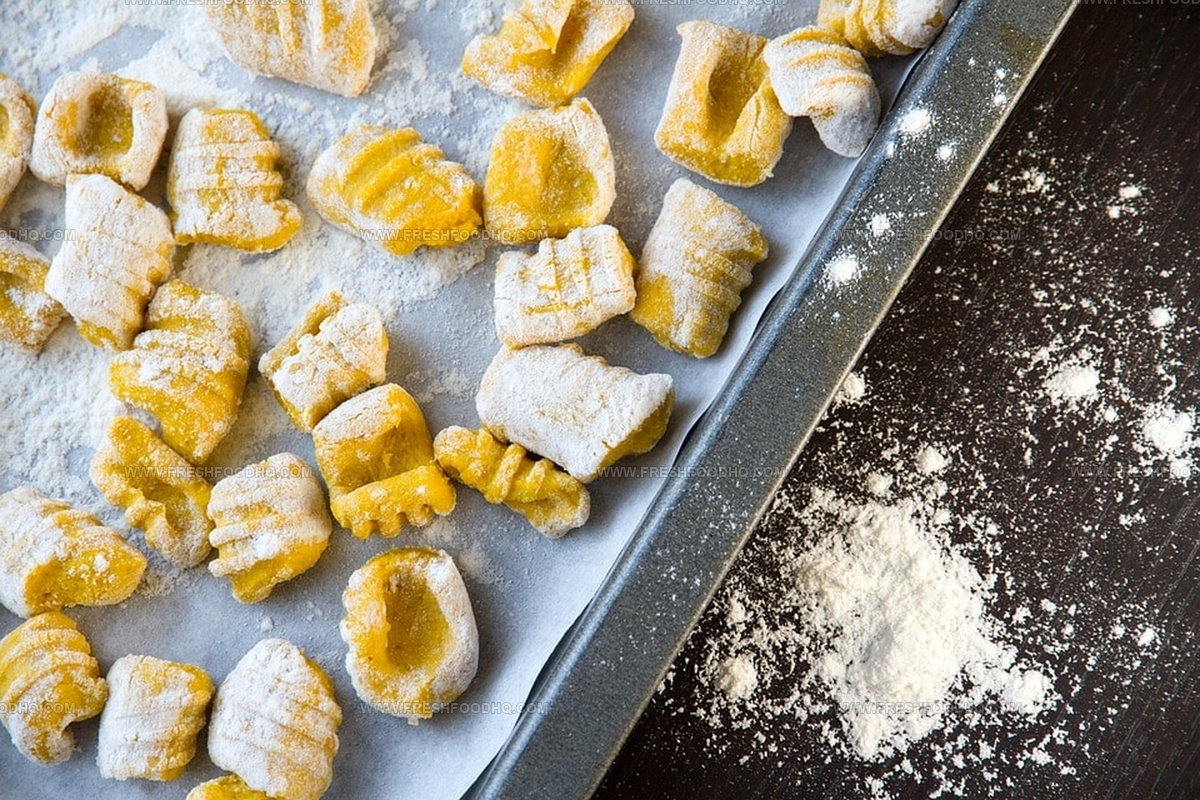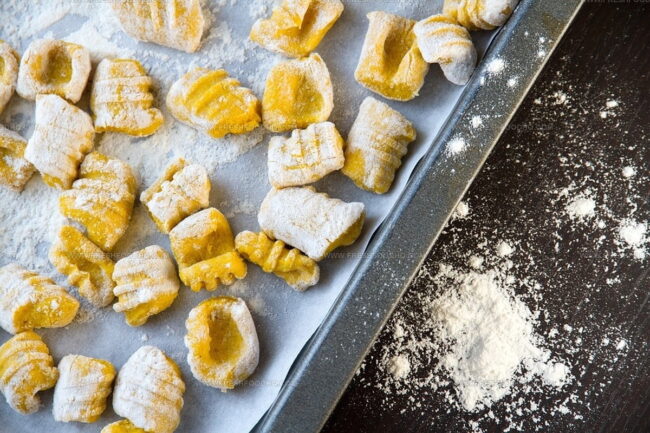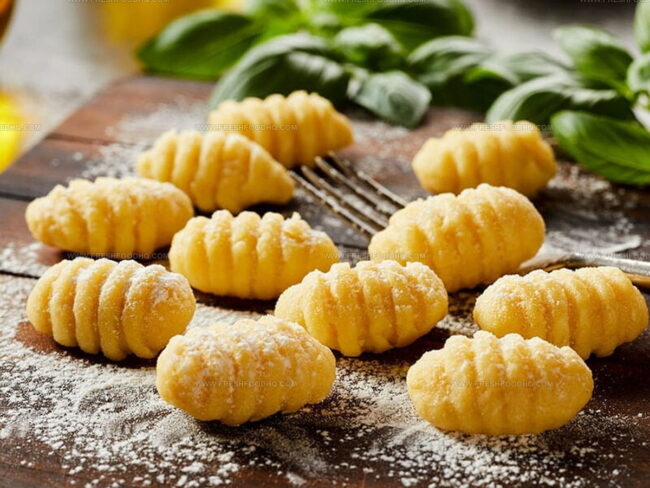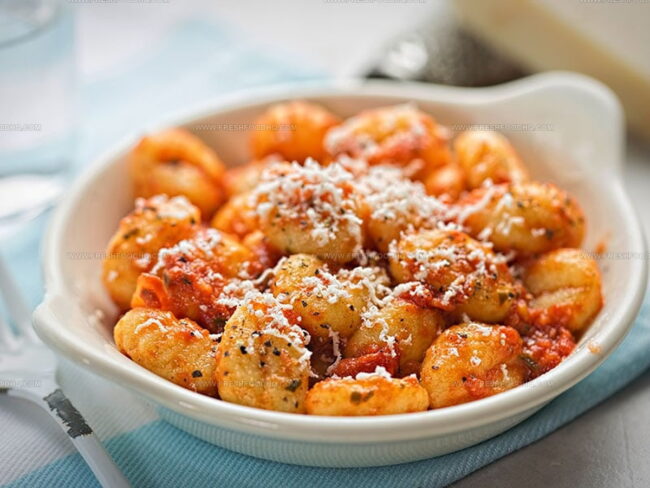What Does Gnocchi Taste Like? A Pillowy Pasta Adventure
Gnocchi, those delightful little potato dumplings, often spark curiosity among food enthusiasts eager to understand their unique culinary character.
Many people encounter these soft, pillowy morsels on restaurant menus but hesitate to order them without knowing what to expect.
Italian cuisine boasts numerous regional variations that transform these humble potato-based delicacies into something truly special.
Soft, tender, and surprisingly versatile, gnocchi can range from light and delicate to rich and comforting depending on preparation techniques.
Ingredients play a crucial role in determining the overall sensory experience, with each recipe offering a different textural and flavor profile.
Chefs and home cooks alike appreciate gnocchi for their ability to absorb sauces and complement various ingredients seamlessly.
If you're wondering about the taste and texture that make these Italian dumplings so beloved, keep reading to unravel the delicious mystery behind gnocchi.
What Is Gnocchi?
Small Italian dumplings might sound strange, but gnocchi brings something special to the table.
These little bites come from a unique dough that differs from typical pasta mixtures.
Potato-based ingredients replace standard water, eggs, and flour combinations most pasta makers use.
Calling gnocchi pasta would be incorrect based on its core makeup.
Dumplings stand apart from noodles with distinct ingredients and preparation methods.
While small enough to look similar to pasta, gnocchi carries different qualities that set it apart.
Potato serves as the main ingredient, making gnocchi much heavier than regular pasta options.
Texture shifts between chewy and light depending on preparation techniques.
Some describe gnocchi as tasting like simple potato and flour combinations, while others compare its feel to thick pudding.
Diners appreciate how gnocchi provides a soft, easy-to-eat experience that satisfies different palate preferences.
The Taste Of Gnocchi
Gnocchi carries a mild flavor that closely matches plain pasta when cooked.
Potatoes naturally lack strong taste, which makes gnocchi and pasta share similar profiles.
Spices and sauces help bring out unique differences in each dish.
Gnocchi shows lots of variation, though some core traits remain consistent.
Someone might consider them bland without experiencing their true potential.
Sampling gnocchi at least once helps understand its actual flavor.
Many find its taste surprisingly close to regular pasta.
Gnocchi’s Texture Explained
Gnocchi comes with a special feel in your mouth.
Chefs describe this pasta in many different ways.
Making gnocchi means paying close attention to its final texture.
Soft or chewy, gnocchi can feel different depending on how you make it.
While some might connect it with potatoes, the actual texture depends on how you handle the potato dough.
Dry dough can make gnocchi feel tough and rubbery.
Cooking gnocchi requires careful watching to prevent overcooking.
Starch makes these little pasta pieces best when fresh.
Storing gnocchi needs careful temperature control.
Simple sauce choices work well with this delicate pasta.
Best Sauces and Toppings for Gnocchi
Gnocchi are soft, pillowy dumplings that soak up flavor from all sorts of sauces and toppings, making each meal cozy and satisfying:
Gnocchi Pairings: Wines and Side Dishes
Gnocchi’s soft texture and mild flavor pair perfectly with a variety of wines and side dishes, letting you create a well-rounded, memorable meal:
Does Gnocchi Taste Sour?
Gnocchi shouldn't have a sour flavor when cooked correctly.
Purchased or reheated gnocchi with a sour taste likely means something went wrong during storage or you received a bad batch.
Sour notes might signal that gnocchi is spoiled and needs throwing away, but this doesn't always mean the entire batch is ruined.
Storage and handling issues could cause this problem.
Nonetheless, if you encounter gnocchi with a sour taste, it's best to discard it and avoid eating.
Is Gnocchi Made From Pasta Or Potatoes?
Gnocchi stands as a dumpling dish rooted in potato-based ingredients.
Potato, flour, and eggs combine to create traditional gnocchi.
Regular pasta differs by using wheat flour and water, with a much higher flour content.
Pasta shapes range widely, from long noodle strands to corkscrews and bowties, thanks to its ingredient mix.
Gnocchi dough behaves differently - it stays loose, skips extensive kneading, and never gets extruded like pasta.
Instead, chefs always form it into small dumplings.
Nutritional profiles show some interesting differences.
Gnocchi contains more sodium, while pasta brings more carbohydrates.
Pasta typically offers more protein and nutrients compared to potato gnocchi.
Chefs can also create gnocchi using a wider range of ingredients than standard pasta.
Serving options remain similar for both dishes.
Gnocchi works wonderfully with tomato or meat sauce and cheese, just like spaghetti.
Melted butter and sage make an excellent topping for this soft dumpling.
Recipes welcome gnocchi as a solid pasta alternative.
Careful cooks should watch for potato oxidation, which causes gnocchi to turn dark or grey when exposed to air.
Is Gnocchi Better For You Than Pasta?
Pasta stands out as a global favorite, showing up in meals across Italy, America, and France.
Yet, this popular dish doesn't always support healthy eating habits.
Gnocchi offers a different path for pasta lovers.
Made mostly from potatoes, these small dumplings pack several health benefits.
Compared to regular pasta, gnocchi brings less fat, more fiber, and fewer calories to your plate.
Reduced carbohydrate levels help support weight management and reduce diabetes risks.
Smart eaters can swap traditional pasta with these tasty potato bites for a lighter meal option.
Delicious flavors remain intact without extra unwanted calories.
Should Gnocchi Taste Like Flour?
Potato-based gnocchi stands out as a special pasta type with unique characteristics.
Chefs often serve this dish as a side, though it works wonderfully as a main course.
Careful attention to dough consistency plays a key role in making perfect gnocchi.
Cooks typically shape these small pasta pieces by rolling them into small balls, which creates distinctive ridges along their surface.
Boiling happens in salted water, and gnocchi reaches readiness when it starts floating upward.
Careful cooks remove the pasta from hot water and let it rest briefly before plating and serving.
Is Gnocchi Considered Vegan?
Potato gnocchi usually contains eggs to help connect potato and flour.
Home cooks can make vegan versions by switching eggs with olive oil or plant-based egg replacements.
Vegan gnocchi might feel slightly different in texture, but works wonderfully with many plant-based sauces for a satisfying dinner.
Can You Eat Gnocchi On Keto?
Potato gnocchi carries fewer carbs compared to pasta, but it's not completely carb-free or keto-safe.
Keto-friendly gnocchi recipes do exist.
Some versions have received great comments from people who tried them.
Specific recipes also offer gluten-free options using cauliflower.
Making keto gnocchi involves ingredients like almond flour, full-fat mozzarella cheese, butter, and eggs.
Some recipes swap in cauliflower rice, cream cheese, coconut flour, and parmesan cheese.
Serving suggestions include a simple butter sauce or homemade low-carb sauce.
Watching portion sizes matters even with keto-friendly foods.
Adding too many eggs can create an unpleasant dough texture.
Not using enough eggs might cause the dough to break apart while rolling.
Learning this recipe takes practice, but the results are totally worth the effort.
Different Ways To Serve Gnocchi
Gnocchi brings comfort to dinner tables with its versatile nature.
Small potato dumplings offer multiple ways to enjoy them. Traditional serving styles include pairing with tomato sauce and cheese.
Meat and vegetables often accompany these delightful little pasta alternatives.
Gnocchi works well as an appetizer, side dish, or even a light meal. Soft potato dumplings share similarities with mashed potatoes in texture.
Some versions feel chewy while others remain light and delicate.
Homemade versions typically melt smoothly in your mouth.
Store-bought frozen options might have a slightly firmer bite.
Cooking methods for gnocchi include several approaches.
Chefs prepare them in soups or next to meat dishes.
Sauces complement these small dumplings nicely.
Boiling water helps create perfect gnocchi when preparing from scratch.
Simple cooking techniques make this dish accessible for many home cooks.





Samantha Lee
Recipe Developer & Content Creator
Expertise
Plant-based and vegetarian recipes, Recipe testing and development, Food blogging and digital content creation, Culinary education and workshops
Education
Oregon Culinary Institute (Portland, OR)
Samantha sees cooking like painting, every fresh herb, every juicy tomato, a new splash of color on a canvas.
After graduating from Oregon Culinary Institute, she blended her love of global cuisines and plant-based cooking into recipes that feel fresh, fearless, and full of heart.
Samantha’s kitchen is a place where comfort food gets a modern remix and every meal feels like a little adventure. When she’s not cooking, she’s out exploring farmers’ markets, sketching new recipe ideas, or getting her hands dirty in a community garden.